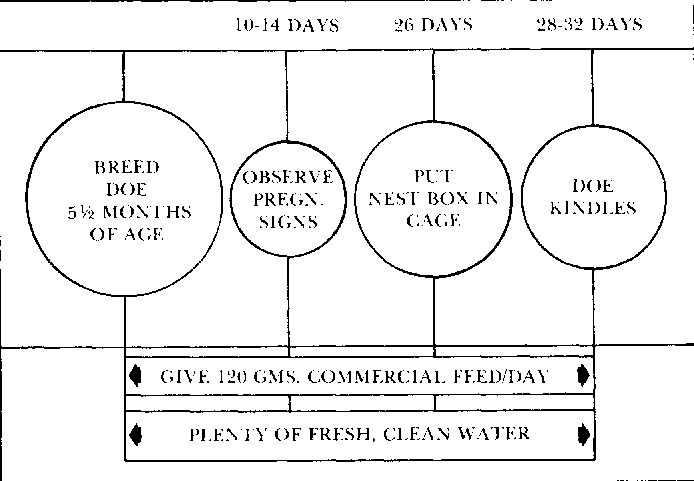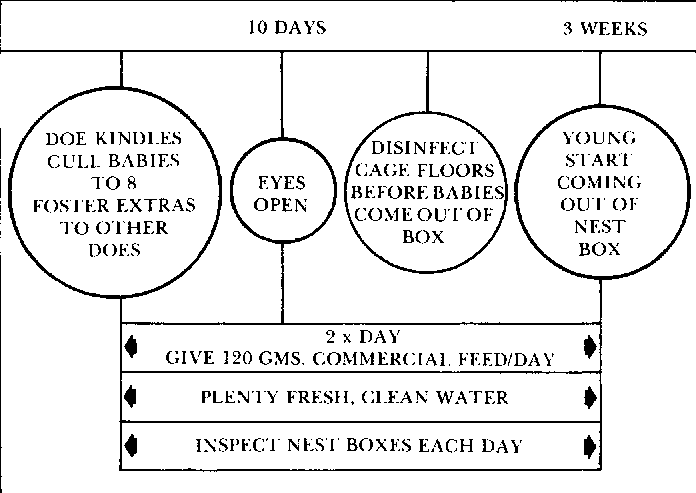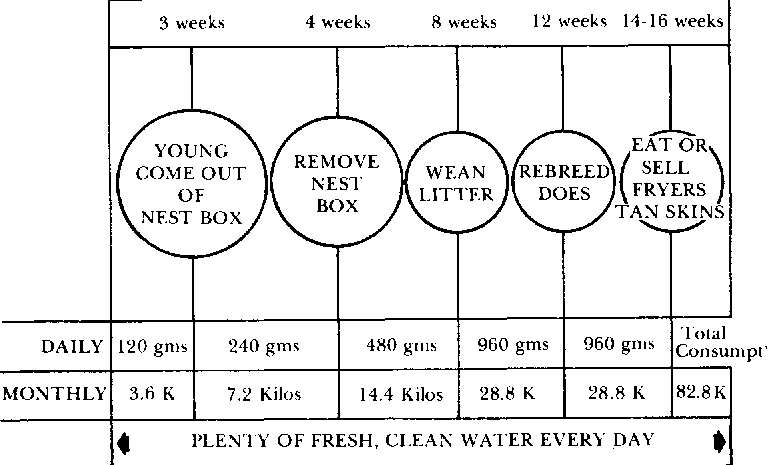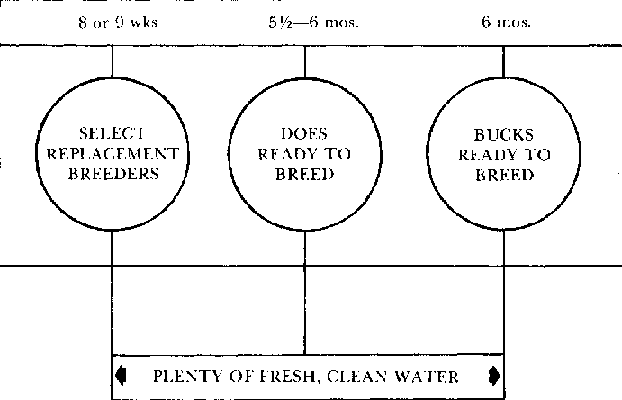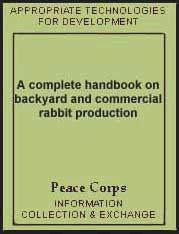
A Complete Handbook on Back-Yard and Commercial Rabbit Production (Peace Corps, 1982, 92 p.)
How to breed
1. Breed does first at 5½ months of age for small breeds and 6 months of age for medium size.
2. Use mature bucks at 6 months of age.
3. Breed in the early morning or late afternoon.
4. Take doe to buck's cage for service, leave for repeated service up to 1() minutes; return doe to her cage. If doe fights buck, she may be restrained by caretaker for service.
5. If buck fails to serve doe in minimum time, switch doe to another buck.
6. Doe ovulates about 8 hours after first service. Some producers take doe back for second service at this time. This doubles breeding time but the average conception percentage is not improved greatly.
7. Palpate doe or observe pregnancy signs 10-14 days after breeding to see if doe is pregnant. Rebreed does that have not conceived.
8. Breed all does that show signs of heat at least one or two days a week.
9. When breeding daily, use bucks every other day. When breeding weekly, bucks may service once in the morning and once in the late afternoon on the breeding day. To keep a good buck for a long period of time use him only three times a week. (Do not let rabbit become overweight. She/he will not service as well then.)
10. Keep one buck to every 10 does. Active, high-producing bucks with good replacements coming will solve most breeding problems.
11. Normal gestation period for rabbits is from 28 to 32 days with an average of 30.
12. Rebreed doe when litter is 45 class old then rebreeding again after 14 days if the doe is in good health.
13. Replace does that produce less than 5 healthy babies, two litters in a row.
14. Replace buck when his record reveals low production, or his offspring show poor feed conversion or poor rate of weight gain.
15. Save replacement stock for expansion as needed to keep cages filled with working does and active bucks. Constantly improve herd by strict culling of low producers.
16. Average production life of good does is about two to three years but, save good producing does as long as production warrants.
17. Average production life of good bucks is from 1 year to 5½ years.
18. Save at least one young replacement doe and buck per month for each 12 working does at the end of the second or third year when replacement is needed. This replacement rate generally will not cover both culling and mortality. Replenish stock as needed.
19. Purchase good bucks occasionally to prevent extreme in breeding from established and reliable farms.
The following figures summarize the information a good manager needs for breeding operations.
FIGURE 3 - RABBIT GESTATION CALENDAR
FIGURE 4 - RABBIT LACTATION CALENDAR FOR MEDIUM-SIZED BREEDS
FIGURE 5 - RABBIT SUCKLING CALENDAR*
* NOTE: This includes Doe's ration up to weaning or 8 weeks. After weaning she continues with 120 gms daily feed ration.
FIGURE 6 - RABBI I BREEDER REPLACEMENT CALENDAR*
* NOTE: For second or third sear of operation.
